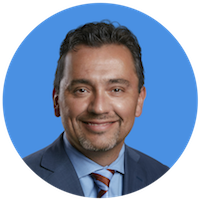In my opinion, the biggest obstacle to effective spine care is misinformation. Compared to other subspecialties (for example: Joint Replacement), Spine is still in its infancy. Non-established treatment methods and outdated myths still persist. For me, it can be difficult trying to sift through all of the patient’s pre-conceptions, explain the options, and come to a decision that makes sense for the patient.
First and foremost, low back pain (LBP) is common. An estimated 80% of Americans will seek treatment for LBP in their lifetime and upwards of 15% will seek care annually. The vast majority of the time, these pain episodes will improve with time alone!!! Simplistically, the spine is a series of moving parts that wear out with time (degeneration). This arthritic back scenario is similar to knee arthritis or shoulder degeneration. The older we get the more likely we are to have a neck or low back pain.
One of the difficulties I encounter daily is misrepresentation regarding non-operative care (NO care). This category of treatment includes a myriad of treatments such as physical therapy, time, spinal injections, chiropractic care and medications. For all intents and purposes, non-op care is simply trying to decrease your symptoms and return you to your baseline. For example, if you have chronic back ache from a long day of activity AND happen to spend a long Saturday doing yard work; you may have an increase in pain. That is OK, with conservative measures our goal is to return you to your baseline… not to be pain free. The miles on the odometer only go one way.
The degenerative changes present in the discs or spine joints do not go away with physical therapy. The irritation of a pre-existing pinched nerve that becomes symptomatic after yard work AND feels better with an injection does not mean the nerve has been un-pinched. While the goal of non-op care is to make you feel better, our secondary motive is to give you tools to decrease future back pain episodes to include frequency, duration and severity.
Education is key in teaching patients how to handle age-appropriate neck or LBP. Knowing that you have an aging spine that occasionally hurts goes a long way in mind set when dealing with back or neck episodes. The thought of “Will I go paralyzed?” or “Do I have a tumor?” will be changed to “Have I been keeping up with my CORE exercises?” or “I know I have degenerative discs and when I sit too long my back hurts. When I travel long distances I need to make sure I change positions and stretch my back.”
Ultimately, an educated patient is a smart patient. They are better able to handle the normal ups and downs of an aging spine and make more informed decisions regarding treatment options. My goal with Doctorpedia is to provide an avenue to help educate patients with valid and accepted information regarding the human spine.
 Back to Blog Homepage
Back to Blog Homepage
